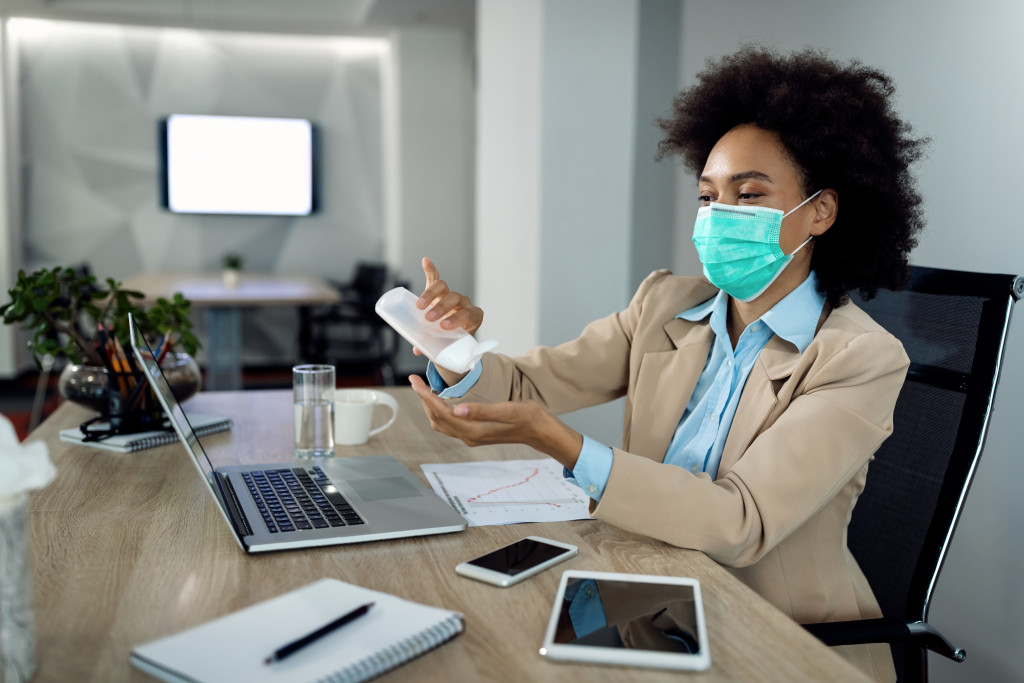While many companies postponed their return to the office-based setup due to the widespread cases of the Covid-19 Delta variant, The Wall Street Journal reports that firms in the financial sector are determined to ramp up their workplace comeback.
Kastle Systems’ research data from 10 major cities show that in the week of September 5, 31 percent of the workforce had returned to their offices. This increased to 35 percent by October 1 and 36 percent by October 8. The highest occupancy of offices was in New York, where there is a high concentration of financial firms. Bloomberg reports that Kastle Systems data shows San Francisco to have the lowest office returns among the 10 cities at 21 percent.
Fortune gathered data from various surveys and reported that according to ZipRecruiter, 50 percent of people actively seeking jobs want to work remotely full time. Among those who do not want to return to work in the office, the primary reason is fear of Covid-19 infection. They do not want to risk getting the virus and transmit it to their loved ones at home.
A Harris Poll survey, however, showed that 62 percent of respondents preferred hybrid work. Of these, 21 percent wanted to work in the office three days a week, 13 percent preferred four days a week, 12 percent preferred two days a week, and five percent preferred one day a week. Meanwhile, 37 percent wanted to go back to the office full time.
Companies also have divergent plans, as shown by a survey by PwC. This fall, 19 percent of companies intend to have all their employees return to the office full time, while 18 percent intend to allow their employees to have a hybrid work setup. Another 18 percent will allow employees to choose between working in the office full time or having a hybrid work schedule.
Workplace Health and Safety Measures
It is the responsibility of employers to ensure the health and safety of all their employees in the workplace, no matter how many or how few they are. Doing so will ensure low absentee rates and higher productivity. It will also raise employee morale as they see how the company values their wellbeing.

Having a high quality of indoor air is essential to any worksite. The heating, ventilation, and air conditioning (HVAC) system ducts are prone to the accumulation of dust and the development of molds that are health hazards. The ducts and air filters need regular cleaning and maintenance. The ducts must be routinely fogged with an odor-removing sanitizer that is hospital-grade.
Installing an air purifying system that uses ultraviolet (UV) light to eradicate airborne viruses, bacteria, and other pollutants is vital in the pandemic. Hiring a professional service like St Louis Clean Air that provides these tasks simplifies the process.
The janitorial services that clean up the premises every day must use disinfectants approved by the U.S. Environmental Protection Agency (EPA). All surfaces must be cleaned then disinfected, focusing on areas with high traffic and touch, such as door handles, drawer and cabinet handles, and desktops.
It is best if the company can replace high-touch items with no-touch alternatives. For instance, regular doors can be replaced with doors that automatically slide open when a sensor picks up the presence of a person standing before it. For security, the door can be made to open after a security card is swiped.
Covid-19 Protocols
Many companies require that all employees returning to the office must be fully vaccinated. Those who are not fully vaccinated must either submit negative RT-PCR tests weekly or work remotely. Following the mandate of the Centers for Disease Control and Prevention (CDC), everyone must wear masks indoors in areas with high incidences of Covid-19.
Physical distancing must still be observed. If there is not enough space to keep desks six feet apart, tall and wide plexiglass dividers must be installed around each desk. The same must be done between the employee’s seat and the client’s seat in client-facing situations. Certain companies allow only fully vaccinated guests in their officers. Others must liaise with them remotely.
The company must also provide employees with a safe place for lunch and break times. To avoid crowding, schedules can be staggered. The area must be well-ventilated. Whenever possible, a roofed area outdoors is ideal.
The Working Environment
The state of the physical work environment reflects company culture. When employees see how management ensures that their environment is well protected, they will also be motivated to do their share in keeping that environment clean. They will feel the importance of complying strictly with pandemic protocols to protect themselves and their workmates. A company culture that promotes care for each other leads to better collaboration and higher revenue outcomes.


